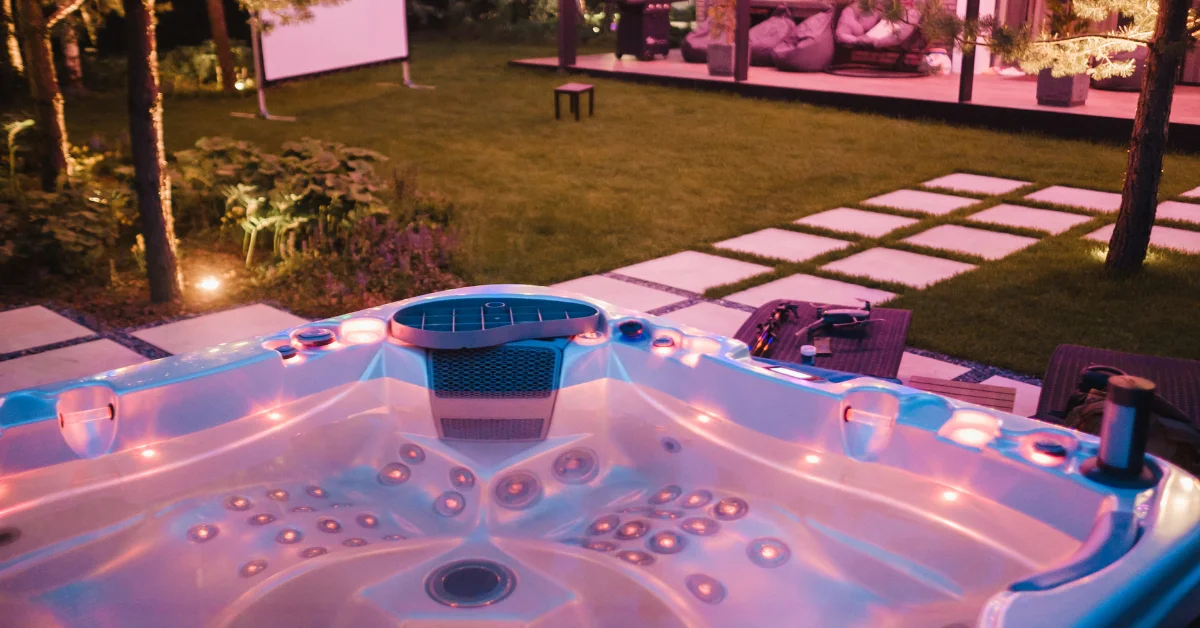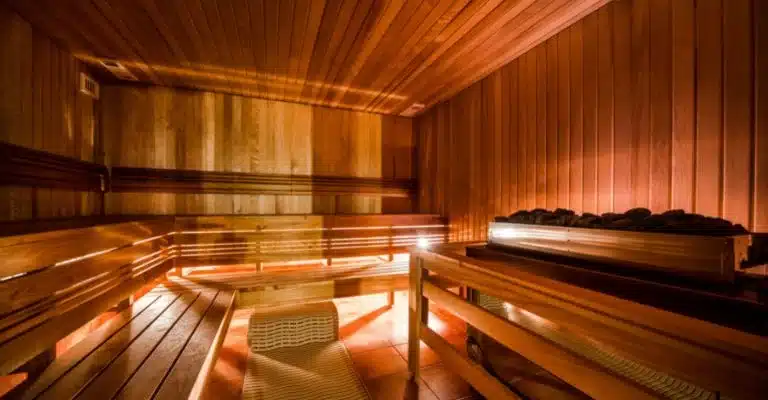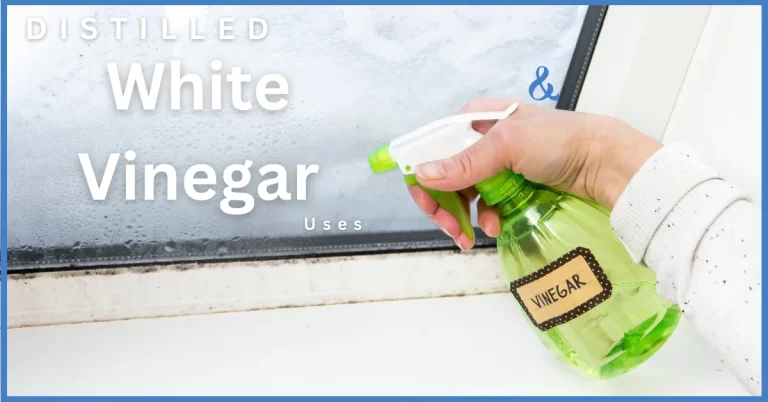How Many Amps Does a Hot Tub Use? A Comprehensive Guide
Explore comprehensive insights into hot tub amperage requirements, installation planning, troubleshooting tips, size comparisons, voltage options, and electrical safety. With expert guidance from Hot Tub Patio, ensure a safe and enjoyable hot tub experience.
Introduction
Understanding how many amps a hot tub uses is crucial for various reasons. Whether you’re planning to install a new troubleshooting electrical issue or commercial safety, knowing the amperage requirements can save you time and potential headaches.
This guide will cover all aspects of hot tub amperage, from basic understanding to safety concerns, to help you make informed decisions and enjoy your hot tub experience to the fullest.
Users typically search for this information with different intents. Some might be curious about the typical amperage requirements for a hot tub, while others may be planning to buy one and want to ensure their electrical service can handle it.
Some troubleshoot electrical problems and need to understand if amperage is the issue. Moreover, comparing the needs of different hot tub sizes and voltage options and understanding the safety aspects are common areas of interest.
Basic Understanding of Hot Tub Amperage
Knowing the typical amperage requirements for a hot tub is essential for proper installation and operation. The amperage needed can vary based on several factors, but a general understanding can help you get started.
Typical Amperage Requirements
Most hot tubs require between 30 to 60 amps. The specific number depends on the hot tub size and its features. Here are some common examples:
- Small hot tubs (2-3 people): Usually require around 30-40 amps.
- Medium hot tubs (4-6 people): Typically need 40-50 amps.
- Large hot tubs (7+ people): Often require 50-60 amps.
Factors Influencing Amperage
Several factors can influence the amperage requirements of a hot tub:
- Heater Size: Larger heaters need more power, increasing the overall amperage.
- Pump Type: High-performance pumps for more decisive jet action require more amps.
- Additional Features: Features like lights, sound systems, and additional jets can increase the amperage needs.
Enhance your hot tub experience by ensuring you have the proper electrical setup. Use our Hot Tub Amperage Calculator to determine the amperage required for your hot tub. This tool helps you plan your installation, avoid electrical issues, and ensure safety. Follow these simple steps to use the calculator:
- Select Hot Tub Size: Choose the size of your hot tub from the dropdown menu.
- Check Additional Features: Tick the checkboxes for additional features your hot tub has, such as a heater, pump, lights, or jets.
- Calculate: Click the “Calculate” button to calculate the estimated amperage needed for your hot tub setup.
Get started now and ensure your hot tub is ready for a safe and relaxing experience!
Hot Tub Amperage Calculator
Use our other hot tub calculation tools.
Planning for Installation
When planning to install a hot tub, it’s crucial that your electrical system can handle the added load. Here’s how you can assess your current setup and prepare for installation.
Assessing Your Electrical Service Capacity
- Check Your Electrical Panel: Look at your main electrical panel to determine its total capacity, usually measured in amps. Most homes have a 200-amp service, but older homes might have a 100-amp service.
- Calculate Existing Load: Add the amperage of your current electrical appliances and compare it to your service capacity. This will help you understand how much additional load your system can handle.
- Determine Hot Tub Requirements: Refer to the hot tub’s manual or manufacturer specifications for the exact amperage requirements.
Steps to Determine if Your Current Setup Can Handle a Hot Tub
- Add the Total Amperage: Add the hot tub’s amperage to your existing load. Ensure the total does not exceed 80% of your panel’s capacity to maintain a safety margin.
- Consider Upgrading Your Electrical Service: If your current capacity is insufficient, you may need to upgrade your electrical service. This might involve increasing the size of your main breaker panel and the service wire.
- Consult a Licensed Electrician: An electrician can assess your electrical system professionally and recommend necessary upgrades. They can also handle the installation to ensure it meets local codes and safety standards.

Importance of Consulting with a Licensed Electrician
Hiring a licensed electrician is critical for several reasons:
- Safety: Improper installation can lead to electrical hazards, including fire risks and electrocution.
- Compliance: Electrical work must comply with local building codes and regulations.
- Expertise: Electricians have the knowledge and tools to handle complex electrical tasks, ensuring your hot tub operates efficiently and safely.
Troubleshooting Electrical Issues
If your hot tub is experiencing electrical problems, understanding the amperage requirements can help diagnose and fix the issues. Here are common problems and how to troubleshoot them.
Common Electrical Problems in Hot Tubs
- Tripped Breakers: A breaker that trips frequently may indicate an overload or short circuit.
- Faulty Heating: Inconsistent heating or a heater that doesn’t turn on can be related to amperage issues.
- Pump Problems: If the pump is not working correctly, it could be due to insufficient power.
- Flickering Lights: Lights that flicker or dim may point to electrical inconsistencies.
How to Diagnose Amperage-Related Issues
- Check the Breaker: Ensure the breaker is rated correctly for your hot tub’s tub’s amperage. If it is too low, it will trip frequently.
- Inspect Wiring: Look for any signs of damaged or loose wiring that could be causing electrical issues.
- Measure Amperage: Use a multimeter to measure the amperage draw of your hot tub components and compare it to the rated amperage.
- Test GFCI: The Ground Fault Circuit Interrupter (GFCI) should be tested to ensure it functions correctly. A faulty GFCI can cause power issues.
Safety Tips for Handling Electrical Components
- Turn Off Power: Always turn off the power at the breaker before inspecting or working on electrical components.
- Wear Protective Gear: Use insulated tools and rubber gloves to protect against electrical shocks.
- Follow Manufacturer Guidelines: Adhere to the hot tub manufacturer’smanufacturer’s instructions for electrical work.
- Avoid Water Contact: Ensure the area around the hot tub is dry before working on electrical components.
Comparison of Hot Tub Sizes and Amperage Requirements
Different hot tub sizes have varying amperage needs. Understanding these differences can help you choose the right hot tub for your home and ensure your electrical system can support it.
Amperage Requirements for Different Sizes
- Small Hot Tubs (2-3 People): Generally require around 30-40 amps. These are ideal for couples or small families and typically have fewer features.
- Medium Hot Tubs (4-6 People): Usually need 40-50 amps. These hot tubs balance size and features, making them popular for families and small gatherings.
- Large Hot Tubs (7+ People): Often require 50-60 amps. They are designed for larger groups and often include more jets, lights, and additional features.
Impact of Additional Features
- Jets: More jets can increase power, raising amperage requirements.
- Heaters: Larger or more efficient heaters will draw more power.
- Lights and Sound Systems: Additional lighting and integrated sound systems add to the overall amperage.
- Water Features: Features like waterfalls or fountains may require extra power.
Choosing the Right Size
When selecting a hot tub, consider the following:
- Usage: Think about how many people will use the hot tub regularly.
- Features: Decide which features are essential for your relaxation and entertainment needs.
- Space: Ensure you have enough physical space to accommodate your desired hot tub size.
- Electrical Capacity: Confirm that your electrical system can handle the amperage requirements of the hot tub.
110v vs 220v Hot Tubs
When choosing a hot tub, you have two voltage options: 110v and 220v. Understanding the differences can help you decide which type is best for your home.
Differences Between 110v and 220v Hot Tubs
- 110v Hot Tubs: Often called “plug-and-play” hot tubs, these can be plugged into a standard household outlet. They are typically smaller and have fewer features.
- 220v Hot Tubs Require a dedicated electrical circuit and professional installation. They are generally more prominent and have more powerful heaters and pumps.
Amperage Implications for Each Voltage Type
- 110v Hot Tubs usually draw 15 to 20 amps. Because they operate on standard household voltage, they are easier to install but may heat up more slowly and have weaker jets.
- 220v Hot Tubs typically require 30 to 60 amps, depending on the size and features. They heat water faster and provide more powerful jet action, making them better for giant hot tubs or those with multiple features.
Pros and Cons of Each Option
110v Hot Tubs
Pros:
- Easy installation: You can plug into a standard outlet.
- Lower initial cost: No need for professional electrical work.
- Portability: This can be easily moved to different locations.
Cons:
- Slower heating: It takes longer to heat the water.
- Limited power: Weaker jets and fewer features.
- Lower capacity: Typically smaller, suitable for fewer people.
220v Hot Tubs
Pros:
- Faster heating: Heats water more quickly.
- More powerful jets: Better massage experience.
- Higher capacity: Suitable for more giant hot tubs with more features.
Cons:
- Professional installation is required. A dedicated electrical circuit is needed.
- Higher initial cost: Electrical work can be expensive.
- Less portability: More challenging to move once installed.
Understanding Electrical Safety
Safety is paramount when installing and maintaining a hot tub. Understanding electrical safety guidelines can help prevent accidents and ensure a safe, enjoyable experience.
Basic Electrical Safety Tips for Hot Tub Owners
- Turn Off Power Before Maintenance: Always disconnect the power before performing any maintenance or repairs on your hot tub.
- Keep Electrical Components Dry: Ensure that electrical components are kept dry and away from water to prevent short circuits and electrical shocks.
- Use GFCI Protection: Ground Fault Circuit Interrupters (GFCIs) are required for hot tubs to protect against electrical shock. Test the GFCI monthly to ensure it’s functioning correctly.
- Inspect Cords and Connections: Regularly check cords and electrical connections for wear and tear. Replace any damaged components immediately.
Amperage Limitations and Safety Precautions
- Do Not Overload Circuits: Ensure your hot tub’s amperage does not exceed your circuit’s capacity. Overloading circuits can cause overheating and fire hazards.
- Proper Grounding: Ensure your hot tub is properly grounded to prevent electrical shocks. This is especially important for outdoor installations.
- Follow the Manufacturer’s Instructions: To ensure safety, adhere to the installation and maintenance guidelines provided by the hot tub manufacturer.
Importance of GFCI Protection
- What is GFCI?: A GFCI is a device that shuts off the electric power circuit when it detects that current flows along an unintended path, such as through water or a person.
- Why is GFCI Important?: It provides an essential safety mechanism to prevent serious injuries or fatalities caused by electric shocks.
- Testing GFCI: Regularly test your GFCI by pressing the “test” button. It must be replaced if it doesn’t trip or reset after tripping.
Professional Installation and Regular Maintenance
- Hire a Licensed Electrician: Always hire a licensed electrician for installation and significant repairs. They ensure that all electrical work complies with local codes and safety standards.
- Regular Inspections: Schedule regular inspections to check for potential electrical issues. This includes examining wiring, connections, and the overall condition of the hot tub.
- Emergency Shutoff: Ensure you have an accessible emergency shutoff switch to disconnect power quickly in an emergency.
Final Thoughts:
Understanding the amperage requirements of a hot tub is crucial for its safe and efficient operation. Whether you’re planning to install a new hot tub, troubleshoot electrical issues, or compare different sizes and voltage options, knowing the electrical demands will help you make informed decisions.
Recap of Key Points
- Typical Amperage Requirements: Most hot tubs require between 30 and 60 amps, depending on size and features.
- Planning for Installation: Assess your electrical service capacity and consult a licensed electrician to ensure your setup can handle the hot tub.
- Troubleshooting Electrical Issues: Common problems like tripped breakers and faulty heating can often be linked to amperage issues. Follow safety tips when diagnosing and fixing these problems.
- Comparison of Sizes: Amperage requirements vary by hot tub size, with larger models needing more power.
- 110v vs 220v: Understand the pros and cons of each option to choose the best hot tub for your needs.
- Electrical Safety: Follow safety guidelines and ensure proper GFCI protection to prevent accidents and electrical hazards.
Encouragement to Consult with Professionals
While this guide provides a comprehensive overview, it’s always best to consult a licensed electrician for installation and troubleshooting. They can ensure your hot tub is set up safely and correctly, adhering to local codes and regulations.
Explore More Resources
Visit Hot Tub Patio for more detailed information and helpful tips on hot tubs. Whether you’re seeking installation advice, maintenance tips, or product recommendations, our resources can help you create the perfect relaxation oasis.
Enjoy your hot tub worry-free by understanding and addressing the amperage requirements and safety considerations. Proper planning, installation, and maintenance will ensure a long-lasting and enjoyable hot tub experience.











One Comment